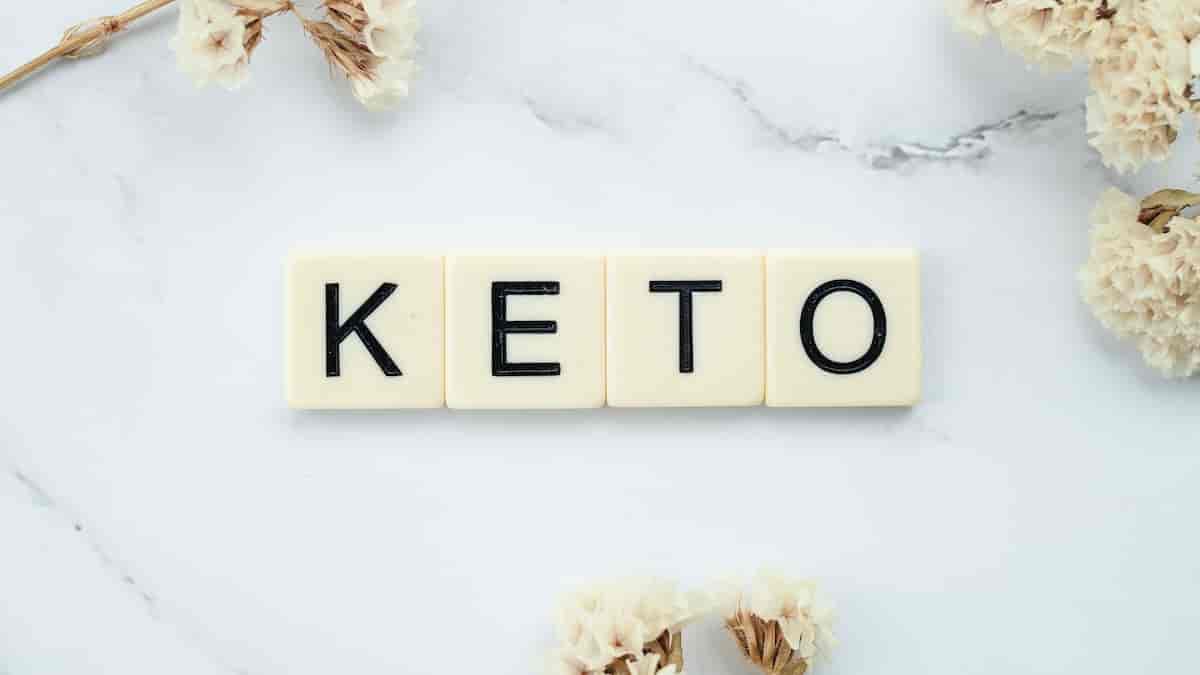Here is your complete guide to fasting without keto.
Introduction to Fasting Without Keto
Fasting has emerged as a popular health and weight management strategy in recent years. While many associate fasting with the ketogenic diet, it’s important to note that fasting doesn’t always require a keto approach. In this comprehensive guide, we’ll explore the world of fasting without keto, providing you with insights, strategies, and answers to frequently asked questions to help you embark on your fasting journey.
Fasting is a practice that involves voluntarily abstaining from food for a specified period. It has gained widespread attention for its potential health benefits, including weight loss, improved metabolic health, mental clarity, and digestive benefits. Contrary to the common belief that fasting must be coupled with a ketogenic diet, there are alternative ways to fast effectively without adhering to keto principles.
Types of Fasting
Let’s begin by understanding the various types of fasting you can explore:
- Intermittent Fasting: This involves cycles of fasting and eating, typically within a daily or weekly timeframe. Common methods include the 16/8 method, where you fast for 16 hours and eat during an 8-hour window.
- Extended Fasting: Extended fasting entails longer fasting periods, often ranging from 24 hours to several days. It allows your body to experience more extended periods of fasting benefits.
- Time-Restricted Eating: This approach focuses on limiting your daily eating window, emphasizing when you eat rather than what you eat.
Fasting Approaches
Fasting with a Balanced Diet
You can fast effectively while maintaining a balanced diet. Consider the following:
- Prioritize whole foods, including lean proteins, vegetables, and complex carbohydrates.
- Opt for nutrient-dense foods to ensure you receive essential vitamins and minerals during fasting.
- Avoid processed foods and excessive sugar consumption.
Plant-Based Fasting
For those following a plant-based diet, fasting without keto is entirely feasible. Here’s how:
- Incorporate a variety of plant-based protein sources like beans, lentils, and tofu.
- Consume plenty of leafy greens and colorful vegetables to meet your nutrient needs.
- Stay hydrated and consider plant-based supplements if necessary.
Protein-Rich Fasting
If you prefer a protein-rich diet during fasting, here are some tips:
- Include lean protein sources such as chicken, fish, and dairy products.
- Protein can help you maintain muscle mass during fasting, so prioritize it in your meals.
- Be mindful of calorie intake to avoid excessive protein consumption.
Fasting Benefits
Weight Management
One of the primary reasons people turn to fasting is for weight management:
- Fasting promotes calorie restriction, helping you create a calorie deficit necessary for weight loss.
- During fasting, your body taps into stored fat for energy, aiding weight loss efforts.
Metabolic Health
Fasting can have a significant impact on metabolic health:
- Studies have shown that fasting can improve insulin sensitivity and lower blood sugar levels.
- It may reduce the risk of type 2 diabetes and other metabolic disorders.
Mental Clarity and Focus
Fasting can enhance cognitive function:
- Some individuals report improved mental clarity and focus during fasting periods.
- This may be due to reduced fluctuations in blood sugar levels.
Digestive Health
Fasting can benefit your digestive system:
- Periods of fasting reduce inflammation in the gut.
- It allows your digestive system to rest and repair, potentially alleviating digestive issues.

Meal Planning and Timing
Creating a fasting schedule and planning your meals strategically is crucial:
- Establish a fasting routine that suits your lifestyle and preferences.
- Experiment with meal timing to find the schedule that works best for you.
- Below are some sample meal plans to help you get started:
| Fasting Approach | Meal Plan Example |
|---|---|
| 16/8 Intermittent Fasting | – 12 PM: Lunch – 4 PM: Snack – 8 PM: Dinner |
| Extended Fasting (24 hours) | – 6 PM: Dinner (Day 1) – 6 PM: Dinner (Day 2) – Break fast at 6 PM (Day 3) |
| Time-Restricted Eating (10 hours) | – 8 AM: Breakfast – 2 PM: Lunch – 6 PM: Dinner |
Fasting Without Keto – Sample Meal Plan
Breakfast (300 calories)
- Scrambled Eggs with Spinach and Tomatoes (150 calories)
- Whole-Grain Toast (70 calories)
- Fresh Fruit Salad (80 calories)
Lunch (400 calories)
- Grilled Chicken Breast Salad (300 calories)
- Mixed Greens
- Cucumbers
- Balsamic Vinaigrette
- Quinoa (100 calories)
Snack (150 calories)
- Greek Yogurt with Berries and Honey (150 calories)
Dinner (450 calories)
- Baked Salmon with Lemon and Herbs (250 calories)
- Steamed Broccoli and Carrots (100 calories)
- Brown Rice (100 calories)
Evening Snack (200 calories)
- Almonds (200 calories)
Total Daily Calories: 1,500 calories
Feel free to adjust this meal plan to your specific calorie goals and dietary preferences while keeping in mind the principles of fasting without keto. Remember to stay well-hydrated throughout the day with non-caloric beverages like water or herbal tea.
Overcoming Challenges
While fasting without keto offers various benefits, there are challenges to overcome:
- Hunger Management: Strategies to curb hunger include drinking water, herbal tea, and consuming fiber-rich foods like vegetables and whole grains.
- Nutrient Deficiency Concerns: To prevent nutrient gaps, focus on diverse, nutrient-dense foods. Consider supplements like B vitamins and omega-3 fatty acids if needed.
- Staying Hydrated: Hydration is crucial during fasting. Drink water, herbal tea, or black coffee. Avoid excessive caffeine, as it can lead to dehydration.
- Monitoring Progress: Track your fasting progress by keeping a journal. Note your fasting hours, energy levels, and any changes in your body.
Read Also: High Rep Calisthenic.
FAQs (Frequently Asked Questions) About Fasting Without Keto
Let’s address some common questions about fasting without keto:
What is the difference between fasting without keto and with keto?
Fasting without keto doesn’t require you to follow a high-fat, low-carb ketogenic diet. You can fast while eating a balanced diet.
Read Also: Bench Glute Workout.
Can I still eat my favorite foods during fasting without keto?
Yes, you can enjoy your favorite foods during your eating window as long as you maintain a calorie deficit.
Read Also: HCG 800 Calorie Diet Plan Menu.
Are there any risks associated with fasting without keto?
Fasting should be done mindfully, and it may not be suitable for everyone. Consult a healthcare professional if you have concerns.
Read Also: 50g Protein Drink Benefits.
How long should I fast without keto for optimal results?
The ideal fasting duration varies among individuals. Start with shorter fasts and gradually increase the duration based on your comfort and goals.
Read Also: Plant Based Protein Water.
Can you lose weight fast without keto?
Yes, you can absolutely lose weight without following a ketogenic (keto) diet. Weight loss primarily depends on creating a calorie deficit, which means burning more calories than you consume. While keto may help some individuals achieve this by reducing appetite and promoting fat burning, fasting without keto can also lead to weight loss. Fasting helps create a calorie deficit by limiting the time you eat, making it an effective weight management strategy on its own.
Read also: Rival Whey Protein.
Is fasting better than keto?
The effectiveness of fasting versus keto depends on your goals and personal preferences. Fasting and keto can both have significant benefits, but they operate on different principles:
- Fasting focuses on when you eat, allowing your body to experience periods of fasting, which can promote weight loss, improve metabolic health, and provide other health benefits.
- Keto, on the other hand, is a specific dietary approach that limits carbohydrate intake, aiming to put your body into a state of ketosis, where it burns fat for energy.
Neither is inherently better than the other; it’s about what works best for you and your lifestyle. Some people may find success with one, the other, or even a combination of both.
Read Also: Best Liquid Protein Shots.
Will a 16-hour fast put me in ketosis?
A 16-hour fast, commonly referred to as the 16/8 intermittent fasting method, may not necessarily put you in a state of ketosis. Ketosis typically requires more prolonged fasting or a very low carbohydrate intake, such as what’s seen in a ketogenic diet.
During a 16-hour fast, your body primarily relies on stored glycogen for energy, not fat. Ketosis typically occurs after several days of fasting or when carbohydrate intake is severely restricted.
If your goal is to achieve ketosis, you would need to extend your fasting period and maintain a low carbohydrate intake to increase the likelihood of reaching a ketogenic state.
Read Also: Keto Diet Morning Wood.
Can intermittent fasting work without diet?
Yes, intermittent fasting can be effective for weight loss and health benefits even without making significant changes to your diet. Intermittent fasting focuses on when you eat, allowing you to maintain your regular diet during your eating windows.
However, for optimal results, it’s essential to strike a balance between fasting and maintaining a balanced diet. While you don’t need to follow a specific diet like keto, prioritizing nutrient-dense foods, staying hydrated, and controlling portion sizes during your eating windows can enhance the benefits of intermittent fasting.
Read Also: Keto Diet 1800 Calories.
Is fasting without keto suitable for everyone?
While many can benefit from fasting without keto, it’s essential to consider your unique health and dietary needs.
Read Also: Carb Sensitive Diet.
Can I exercise while fasting without keto?
Yes, you can exercise during fasting. Just ensure you stay hydrated and consider lighter workouts during extended fasts.
Read Also: High Protein Rice Cakes.
What beverages are allowed during fasting without keto?
Water, herbal tea, and black coffee are generally acceptable. Avoid sugary and calorie-laden beverages.
Read Also: Hormone Reset Diet Recipes.
How can I prevent muscle loss during fasting without keto?
Prioritize protein intake during your eating window and engage in strength training exercises to preserve muscle mass.
Read Also: Protein Slush.
Conclusion
In conclusion, fasting without keto is a viable and effective approach to improve your health and manage your weight. By understanding the various fasting methods, planning your meals thoughtfully, and addressing challenges, you can embark on a fasting journey tailored to your preferences and needs. Remember that fasting should be approached mindfully, and consulting with a healthcare professional is always a good practice. Start your fasting journey today and discover the benefits it can bring to your life.
Read Also: Crystal Light vs Diet Soda.

